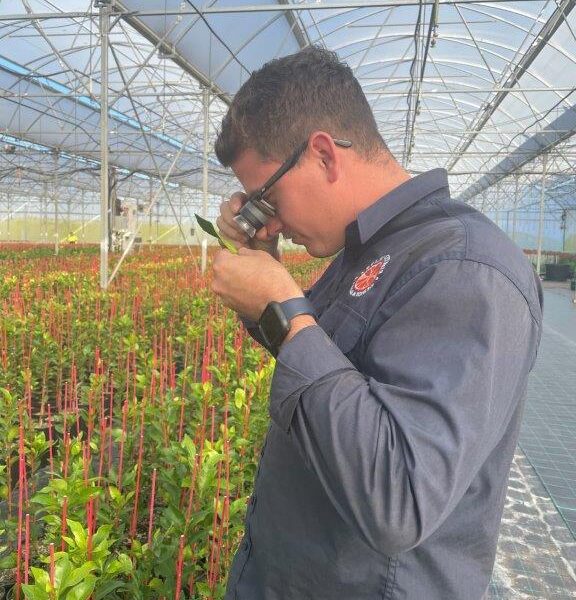Biosecurity – an issue for us all
By Clive Larkman
The world is a very different place from what it was one hundred or even fifty years ago. Fashion, technology, health and travel are some of the obvious sectors with immense change but there are less apparent ones that have major effects on our way of life. It is not so long ago that it was legally quite easy to move around the planet and to move plants and animals across international borders. Since the Columbian Exchange in the late 15th century this movement of plant and animal material has altered the way we all live. It brought new foods and animals to people all over the world as well as exposing them to a range of new pests and diseases.
The risks of this mass movement of biological material only became relevant in the mid twentieth century. It was at this point quarantine restrictions were imposed by many countries on people and products crossing their borders. For some countries, such as Singapore where the borders are quite open, agricultural production is limited, and native environments are small, the restrictions are minimal. For many European nations, the rules are there but due to completely open borders the restrictions are barely observed. For countries like Australia and New Zealand, that are island nations, and which have a high dependency on agricultural production and rare, unique and sensitive natural environments, the quarantine rules are strict and strongly enforced.
Australia has some of the strictest and most tightly enforced quarantine regulations and processes in the world. Animals have been subject to post entry quarantining for several decades but with limited varietal restrictions. Plants and plant products have a much greater level of control due to the greater range of pests and diseases they carry, plus many have great weed potential. The risks to Australia are great especially with regard to some pests and diseases. Fire ants, Varroa mite and foot and mouth disease are major risks that are in the public domain and have some level of public awareness and acceptance of the restrictions. Others that are more damaging and are having a greater effect on trade include Xylella, Khapra Beetle and exotic fruit flies.
Australia is a large country and has internal quarantine restrictions for similar reasons to international restrictions. Although there are eight states/territories, there are four quarantinable zones. Tasmania, due to the need to cross Bass Straight, has tough and enforceable restrictions. The same is the case with Western Australia and the Northern Territory which have large deserts with few places to cross the borders. Like Tasmania, this enables good secure control of plant material entering the states. South Australia is not as distant from other states but still has limited places to cross the border, also enabling the ability of authorities to maintain some level of biosecurity regulation. In most cases this is a one way restriction of plant movement from the larger states of Victoria, NSW and Queensland, but there are some cases where exotic pests have been stopped in reverse.
The borders and border controls can have positive and negative effects on nations and states, as the world saw with the COVID pandemic. Being able to shut down migration across national borders enabled some countries like Australia to minimise the spread of and damage done by COVID19. The closure of State borders within Australia helped reduce the spread but also caused much suffering for people stuck on various sides of the borders. The use of borders to control the spread of pests and diseases needs to be done with a high level of responsibility and understanding of the positive and negative effects of any restrictions imposed. They should never be used for philosophical or moral reasons, nor as trade barriers.
As COVID demonstrated, the use of border controls to keep pests and diseases out of a country or region is controlled by governments but still requires co-operation of the general public. The modern traveller has an expectation that they can travel relatively freely around the world. Modern trade is also based on a manageable system of moving product between countries. Hence there is a need to have some degree of tolerance in moving around the world. The only way to have 100% control of any border is to impose restrictions on movement and trade that are neither acceptable nor practical.
There is an old saying “education not legislation is the best way to solve social issues”. In the case of biosecurity this cannot be more applicable. The only real way to practically control the borders is for those that move or move products across them to have an understanding of the risks and what they can do to minimise those risks. The majority of the community want to do what is right – they just need to know how and what to do. The more understanding they have, the easier it is for them to do what is right. The other benefit is that authorities can spend more resources on those who deliberately breech the rules, rather than on those who do so due to ignorance.
Biosecurity is intertwined with horticulture and as it has a controlling influence on what is grown and where it is grown.
Next month we will look at the processes of importing plants into Australia and some of the repercussions of these processes.
Main image: Mitch at Eyles Nursery performing crop monitoring (Image taken by Emma De Landre of GIA)

